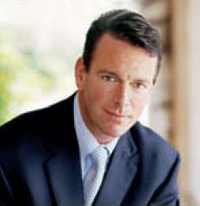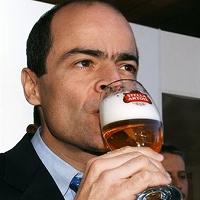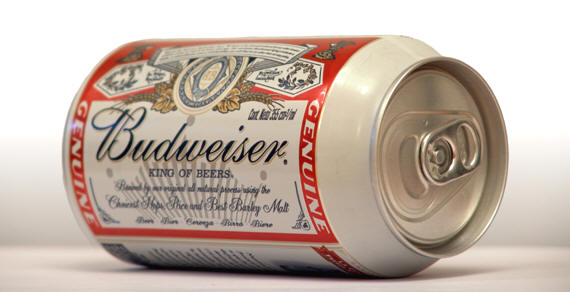|
Background of the transaction
For
years, large beer companies have been involved in an aggressive process
of concentration. In 2002, the giant
SABMiller
was born, with the purchase of
Miller
from the Philip
Morris
group by South African Breweries (SAB) for 5 billion dollars. Two
years later, the acquisition of the Brazilian giant
AmBev
by the Belgian company
Interbrew,
for 9.4 billion euros, created the global colossal
InBev.
In July 2005,
SABMiller
bought Colombia’s Bavaria for 7.8 billion dollars. October 2007
saw the merging of
Miller
and
Coors
–the second and third largest brewers in the US, respectively–, who
joined to compete with that country’s leading company,
Anheuser-Busch
(A-B).
A month later,
SABMiller
announced that it was purchasing Germany’s Grolsch for 816
million euros. Last January 25, the Danish company Carlsberg and
the Dutch brewer Heineken signed an agreement to acquire
Scottish & Newcastle, in a transaction valued at 10.35
billion euros.
But
2008 was to bring new developments. This year all past records have been
broken by the Belgian-Brazilian
InBev,
with its bid for the hostile takeover of its US rival,
A-B
–the manufacturer of the well-known brand Budweiser–, with sales
of nearly 19.32 billion dollars.
InBev’s
initial
offer was 65 dollars a share, for a total of 46 billion dollars.
Just to have an idea of the scale of this transaction, suffice it to say
that in the last five years the 20 largest beer companies in the world
have been involved in 280 transactions, with a combined value of more
than 80 billion dollars. The mergers and acquisitions can be explained
by the fact that breweries –like all other companies in the food
industry– are having to cope with the rise in prices of raw materials.
Because of this, greater efficiency in production through concentration
becomes a necessity, given the impossibility of transferring the
increase in costs entirely to consumers. On the other hand, companies
enthusiastically discover that global warming is setting a new tendency
towards warmer winters, and, therefore, leading consumers to drink more
beer year round.
The parties
InBev,
which as is commonly known was born of a merger between the Belgian
company
Interbrew
and the Brazilian
AmBev,
is the second largest beer producer in the world in terms of volume,
behind the UK company
SABMiller,
and last year its production totaled 225.6 million hectoliters, securing
a 12.8 percent share of the global market, and employing some 77,000
workers distributed throughout 32 countries. In December 2005, the
Brazilian Carlos Brito took office as chief executive officer,
and as of that date, more and more Brazilians have been placed in high
executive positions at
InBev,
in a move that some analysts qualify as “reverse acquisition.” Belgian
executives and politicians admit that they no longer control the
company. InBev
“used
to be totally Belgian, then it became Belgian-Brazilian, and now it’s
Brazilian-Belgian,” that country’s Minister of Economy, Vicent Van
Quickenborne, remarked.
|

August Busch
IV |
Anheuser-Busch Companies,
Inc.
is the largest beer producer in the United States and the third
largest producer worldwide, with central offices located in Saint Louis,
Missouri. Its origins date back to the year 1852, with the founding of a
small brewery. In 1876 it launched a pale-colored beer in the market,
under the brand name Budweiser, which would in time become the
most widely sold beer in the United
States, securing 48.5 percent of that market. It has 12
plants in the country, which employ 8,600 people, producing 150.7
million hectoliters of beer a year. Budweiser id the official
beer sponsor of the upcoming Beijing Olympics. In addition,
A-B
holds a 27 percent interest in Tsingtao, China’s leading
premium beer company.
To this we must add that
A-B
is the majority shareholder (with 50.2 percent) of the Mexican Grupo
Modelo, the leading beer producer and exporter of Mexico,
which, in addition to other brands, markets the popular Corona Extra,
selling almost 120 million cases of this brand in the United States
each year. The negotiations between
InBev
and Modelo are running down a different track, and if they are
unable to solve their differences, they will have to put matters in the
hands of a New York court, in a suit that could go on for years.
Everything seems to indicate that Modelo will finally accept the
purchase of its partner
A-B
by
InBev,
which will enable it to enter the Brazilian market, the world’s
third largest consumer of beer.
A difficult match
|

Carlos Brito |
Everything began in early June when
InBev
presented A-B
with a
proposal for a hostile takeover, for a price of 46.4 billion dollars, or
65 dollars a share. The offer was rejected, because
A-B
considered it “financially inadequate and contrary to the best interests
of the shareholders” and its CEO, August Busch IV, sent a letter
to Carlos Brito where he set out the reasons for turning down the
offer. A-B
also brought an action against
InBev,
claiming that the offer was illegal and that it proposed a “markdown
price,” and accused
InBev
of using “deceptive practices.”
InBev,
for its part, set in motion a plan to replace the Board of Directors of
A-B,
to secure a majority of members that would be in favor of the sale.
Workers, politicians, and Cuba thrown in for good measure
In this
nuptial dance that lasted over a month, the parties did not shy away
from using any stratagem they could think of.
A-B
went as
far as to resort to the anti-Castro policy that has characterized US
administrations for decades, accusing
InBev
of having commercial links with the government of Cuba, an
argument that received the support of the State Department.
InBev
employs nearly 600 people in Cuba and has a 44 percent market
share, from the days of the Canadian Labatt, before it was taken
over by
Interbrew.
When Interbrew
merged with
AmBev
to form InBev,
Labatt was absorbed by
Ambev,
and it came under São Paulo management, so that
A-B’s
claim is apparently groundless.
Besides
being the brand of beer chosen by one out of two Americans, Budweiser’s
condition as the sponsor of the Super Bowl (the American football
championship) and the presence of the eagle and the colors red, white
and blue on the label have turned this beer into an iconic symbol of
American culture. Consequently, it’s no wonder that the political
establishment would feel compelled to voice its opinion on the possible
sale of A-B.
Republican presidential candidate John McCain is connected to
A-B
through his wife, Cindy Hensley, who owns the company Hensley
& Co., Budweiser’s exclusive distributor. Nonetheless,
McCain refrained from expressing an opinion, since if he approved
the purchase he risked being accused of lack of nationalism, and if he
spoke against it, he could be attacked for opposing free trade. For his
part, Democratic presidential nominee Barack Obama, declared in a
press release: “It was disappointing to hear that
A-B
agreed to be sold to
InBev.
A-B
is an American icon and this sale could threaten thousands of jobs in
Missouri.”
During
the negotiations, Carlos Brito met with Republican senator for
the state of Missouri, Christopher Bond. Bond ended the
meeting declaring, “My Missouri constituents say, this Bud’s not
for you.” Brito also met with Claire McCaskill, Democratic
Senator for Missouri. After the meeting the senator said, “it would be
great if the bid were turned down, so we could show them this country is
not for sale.” “On behalf of me and all my friends that like nothing
better than a Bud Light every summer, it makes us very upset,”
she added. The governor of Missouri, Republican Matt Blunt, for
his part declared: “I am strongly opposed to the sale of
A-B
and find the offer to buy the company deeply troubling.” The main
argument wielded by these politicians was their concern over the
possible loss of jobs if the sale came through. Several websites that
were launched to oppose the deal claimed, “it’s about our jobs and our
nation.”
This bit of patriotism was not enough to conceal the perversity of the
logic behind capitalism. Busch IV, CEO of
A-B,
presented an action plan that, among other measures, includes cutting
1,290 jobs, that is, 15 percent of all current jobs. The silence with
which politicians have met this measure seems to indicate that job cuts
are of no concern as long as they’re decided by Americans.
A six-billion-dollar cannon shot
If in
the first decade of the 20th century, 50 thousand Mexican
pesos was enough money to allow Álvaro Obregón to assert
that no Mexican general could resist 50 thousand pesos worth of cannon
fire, today, 6 billion dollars is also a lot of money. So when InBev
put that figure on the table, raising its bid to 52 billion dollars (70
dollars a share),
A-B’s
shareholders were not able to resist the cannon shot, and
they closed their eyes, opened their pockets and said yes.
The new
group will be called
Anheuser-Busch InBev
and it will become the world’s dominant brewer and one of the five
largest companies in the food industry. It will have a 25 percent share
of the beer market, producing 460 million hectoliters a year, and its
sales –40 percent of which are in the United States– will total
36 billion dollars.
Carlos Brito
will be the chief executive officer of the new company, and
A-B
will hold two seats on the Board. Under the agreement it was established
that the North American headquarters would remain in the city of
Saint Louis and that none of the breweries in the United States would be
shut down, but what is not guaranteed is whether the current number of
jobs will be preserved.
Perspectives for the future
With
the aim of winning
A-B
shareholders over, during the negotiations
InBev
promised to bring down annual operating costs by 1.5 billion dollars.
This means that it will impose the style of its Brazilian executives,
led by Carlos Brito. This style is characterized by setting very
demanding production and sales targets, and by brutally cutting costs.
An example of this is the closure of the Labatt plants in Toronto
and Vancouver in 2005, and the layoffs in Europe during 2006,
when InBev
implemented its zero budget, a system whereby company divisions have to
start with a budget of zero dollars and justify every expense, instead
of being able to modify their budgets. Also in Europe,
InBev
is already applying a policy of outsourcing jobs and creating flexible
half-time contracting schemes.
In
Argentina, Budweiser is the fourth leading brand in sales,
with a 5 percent market share. Both in Argentina and in Chile,
the brand is licensed to the Chilean group CCU, whose local
subsidiary has
A-B
as a
minority shareholder (with a 4 percent stake). The licensing agreement
was signed late last year, and extends to 2025. For its part,
InBev
is by far the number one brewery in the market, with a 74 percent market
share, through its brands Quilmes, Brahma and Stella
Artois. Therefore, everything seems to indicate that the brands will
continue to operate separately.
We’ve yet to see how
SABMiller
will react, and we can’t rule out agreements with the Mexican company
FEMSA,
or with
Molson Coors,
with whom it has already merged operations in the United States.
We will soon see the consequences and reactions triggered by this mega
acquisition.
 |